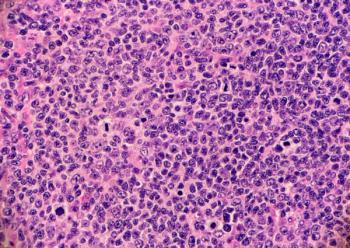
From Science to Fiction
Almost all of us have said over the years, "With the things I?ve seen, I should write a book."
Almost all of us have said over the years, “With the things I’ve seen, I should write a book.” Well, after a brief academic career and 27 years in the Pharmaceutical Development Division of a Big Pharma company, I decided to give it a try. As a scientist who traveled quite a bit, I always kept a small notebook with me to record offbeat observations—hotel problems, strange airport experiences, overheard bizarre conversations, serious statements (unintentionally hilarious) from HR consultants on how to stimulate creativity… In addition, through involvement in “due diligence” evaluations and other activities, I observed (or heard about) some bizarre things concerning clinical trials and drug purity. I was sure that I had more than enough fodder for an exciting novel about scientists and physicians behaving badly in the international drug industry.
An immediate problem was that I had spent a lifetime honing my scientific writing skills. Writing a good scientific research article has to be learned, like all other skills. With time you learn to separate the things which should be said in Introduction, Methods, Results, and Discussion sections. You learn how to decide, for the particular journal, how much detail should be provided for the technical methods used. You learn by experience the best way to clearly present certain kinds of data—by table or by figure, and what kind of figure. Perhaps most importantly, you learn to delineate appropriate and inappropriate conclusions, and the degree to which speculation is appropriate, particularly for the journal chosen. I wrote many review articles over my scientific tenure, which required additional learned skills, e.g. how to draw useful general conclusions from other scientists’ aggregated work, some appropriately controlled and interpreted and some not. Review writing also requires skill at the art of criticizing work without unduly criticizing the scientists who produced it. I also wrote the scientific background and examples of numerous patent applications, requiring different learned semantic skills.
With the exception of my obsession with proofreading, all this scientific writing did not prepare me for writing fiction. I was like a classical guitarist trying to play jazz!
Writing fiction is all about action and dialogue. My first big mistake was to start my first novel with two relatively long chapters describing basic (or “pure”) biological research, preclinical research in drug companies, and the design and execution and pitfalls of clinical trials. I logically reasoned that to truly understand the nuances of the exciting story I was writing, the reader would first need to undergo a brief didactic education. Every reader of my first draft said the same thing loudly – take that didactic crap out! Start your novel with something exciting or mysterious – draw the reader in! My two beautiful didactic chapters now sit in an electronic file on my computer, waiting for use somewhere – the Journal of Chemical Education?
A second big jump in going from scientific writing to fiction is concern for scientific accuracy. As a science writer, I was meticulous about accuracy and about stating uncertainties where they existed. I had to learn that when you use scientific information as a background for suspenseful fiction, you can throw all concern about accuracy out the window! Scientific and technical background in a novel merely has to be plausible to provide the world in which the characters act. It certainly does not have to be correct or even currently feasible. Think Michael Crichton’s Jurassic Park.
A third issue for a former science writer is style. In writing science, I strove to write “The King’s English”. In my elementary school education at St. Teresa School in Queens, N.Y., the Dominican Sisters drummed proper grammar into me until it was part of my DNA (perhaps via histone methylation, but a discussion of this would be too technical for this piece). To write good fiction, I had to shake off some of this training (via demethylation?). I learned about writing dialogue through trial and error, and the advice of readers. I learned to use contractions – lots of them. And if a character would naturally say “gonna” rather than “going to”, I learned to use “gonna”! Most fictional characters “aren’t gonna” talk like a scientific paper.
My space here is limited, so I will stop for now. In future blogs, I will talk more about writing style for fiction, and discuss the mechanics of traditional- and self-publishing and the most difficult part of all, marketing.
Bill Curatolo’s novel “Campanilismo” is set against the background of international biotech, and involves broken clinical studies, illegal internet pharmacies, and New Jersey hoods. A biophysicist by training, Dr. Curatolo served for six years on the staff at MIT, and for 27 years in the R&D Division at Pfizer. He is the author of numerous scientific publications, and holds thirty-two US Patents.
Newsletter
Stay current in clinical research with Applied Clinical Trials, providing expert insights, regulatory updates, and practical strategies for successful clinical trial design and execution.




